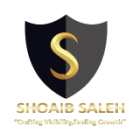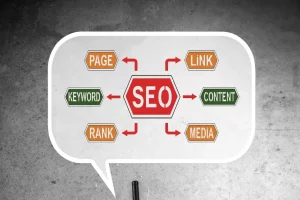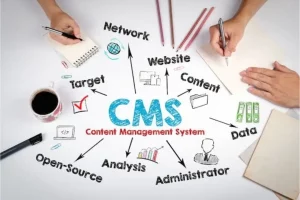
Crack The Code: Discover the 8 Types of CMS You Must Know!
A Content Management System (CMS) is a software platform that allows you to create, edit, organize, and publish content. The need for technical skills is greatly diminished as we navigate through the progressively digitizing times. CMS has surfaced as an effective crutch ensuring smooth website development with its easy user interface.
Using a CMS is becoming increasingly essential in our online-driven world as it ensures the effective organization of your valuable information and data. This blog serves to comprehensively different types of CMS, guiding you from understanding what a CMS is, how to choose the right one, and the benefits one can enjoy with it to a deep-dive into the intricacies of Open-Source CMS, Proprietary CMS, Cloud CMS, Headless CMS, and many others.
Table of Contents
Unveiling The Power-Packed Key Features of CMS
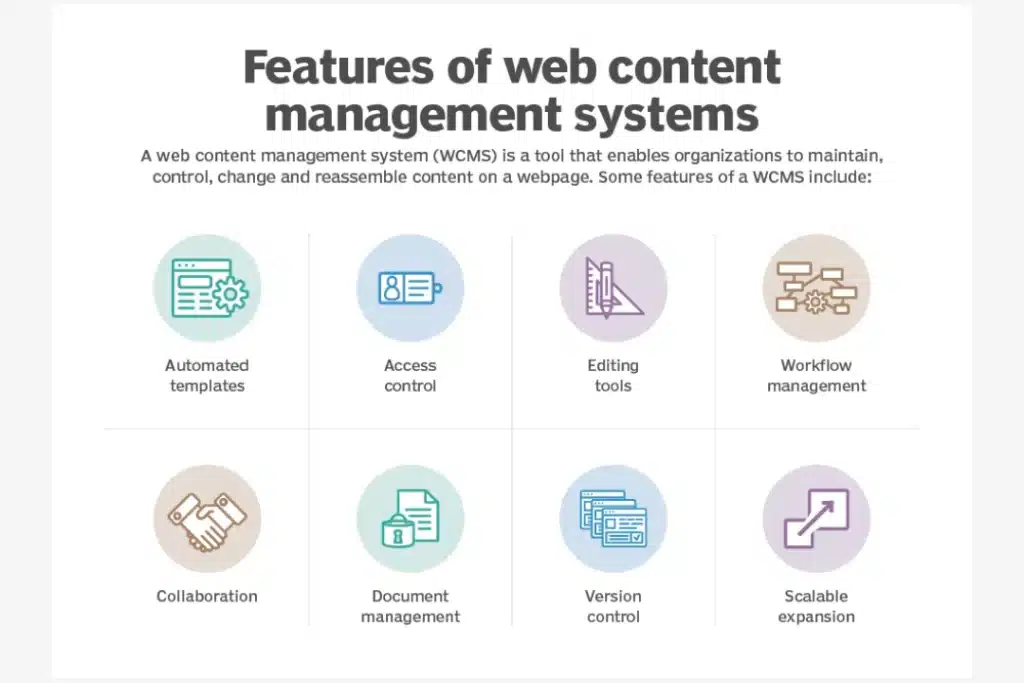
A good CMS comes with several defining characteristics worth noting. Centralized control over content, Search Engine optimization abilities, intuitive indexing, and format management systems are just some of the key CMS features you need to consider when looking to streamline your content production and publication.
How to Choose the Right CMS for You?
In the landscape of countless CMS options, choosing the right one can seem daunting.
- It primarily starts with identifying your individual or business needs.
- Evaluate on parameters like flexibility, scalability, security, ease of use, and cost.
- Some CMS platforms are free, while others come at a premium.
- Factor in technical support and review and feedback mechanisms before you make your pick.
Explore The Benefits Of Using A CMS
- Enhanced Workflow Efficiency: A CMS streamlines processes, reducing complexities and expediting content publication.
- Simplified Site Maintenance: Easily manage and update content, plugins, and themes, minimizing downtime and maintenance efforts.
- Amplified Content Control: Gain greater authority over your content, facilitating seamless editing, organizing, and publishing.
- Extensive Customization Potential: Tailor your website to specific needs, incorporating custom features and designs for a unique online presence.
- Integrated SEO Tools: Leverage built-in SEO functionalities to optimize content, enhancing visibility and search engine rankings effortlessly.
Delve into the 8 Imperative Types Of CMS You Need to Explore!
Open-Source CMS
Open-Source CMS platforms are software applications whose source code is freely accessible and modifiable by anyone. They empower users with the ability to create, manage, and publish content on the web without licensing costs. These systems typically offer a user-friendly interface, content editing tools, customizable themes, and plugin architectures that allow for extensions and enhancements. The hallmark of open-source CMS lies in its collaborative community-driven development, encouraging continuous improvement and innovation.
Pros and Cons
Pros:
- Cost-Efficiency: Being free to use, open-source CMS eliminates initial licensing fees, making it accessible to a wide range of users, including individuals, startups, and small businesses.
- Flexibility and Customization: These platforms offer extensive customization options, allowing users to tailor websites to their specific needs by modifying themes, adding plugins, and altering code.
- Community Support: The active community of developers contributes to ongoing updates, bug fixes, and the creation of new plugins and themes, fostering a robust support system.
- Transparency and Security: The transparent nature of open-source code allows for continuous scrutiny by developers, enhancing security and minimizing vulnerabilities through swift identification and resolution of issues.
Cons:
- Technical Expertise Required: While user-friendly, customization often requires a certain level of technical proficiency, especially for more complex modifications or troubleshooting.
- Lack of Official Support: Unlike proprietary systems that offer dedicated customer support, open-source CMS platforms primarily rely on community forums and documentation for assistance.
- Integration Challenges: Some plugins or extensions might not integrate seamlessly, leading to compatibility issues or potential conflicts in functionality.
- Ongoing Maintenance Responsibility: Users must regularly update the CMS, plugins, and themes to ensure security and compatibility, which can be time-consuming.
Popular Open-Source CMS Platforms
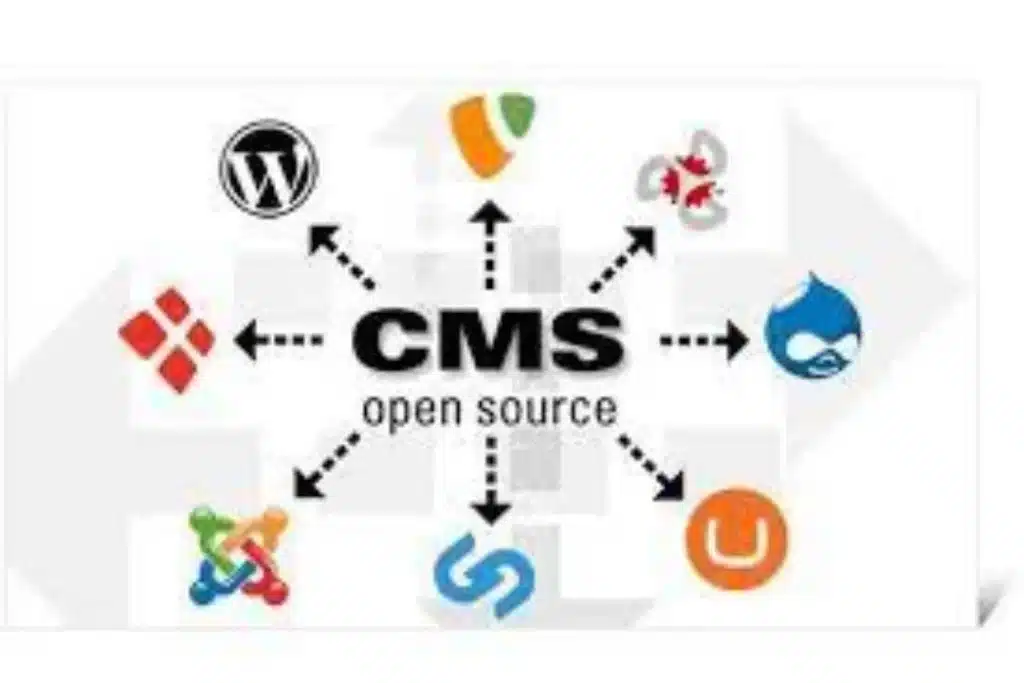
- WordPress: Renowned for its versatility and user-friendliness, WordPress powers a significant portion of websites globally, offering a vast array of themes and plugins.
- Joomla: Known for its flexibility and scalability, Joomla caters to various website needs, including e-commerce, social networking, and content-rich websites.
- Drupal: Preferred for its robustness and security features, Drupal is ideal for complex, high-traffic websites, offering extensive customization options.
Proprietary CMS
Proprietary Content Management Systems are exclusive platforms developed and maintained by a single entity or company. These systems are not open-source, meaning their source code is not publicly available for modification or distribution. Proprietary CMS often come with a suite of features tailored to specific industries or businesses, offering unique functionalities that cater to distinct needs. Their closed nature allows for controlled development and support, ensuring a cohesive and integrated solution.
These CMS platforms typically provide a user-friendly interface that simplifies content management tasks without requiring extensive technical expertise. They offer comprehensive solutions for content creation, storage, workflow management, and website customization. Often, proprietary CMS comes with extensive customer support and regular updates to maintain security and efficiency.
Advantages and Disadvantages
Advantages:
- Tailored Solutions: Proprietary CMS often provide customized solutions catering to specific industries or businesses, addressing their unique requirements more precisely.
- Comprehensive Support: Companies offering proprietary CMS usually provide comprehensive customer support, ensuring timely assistance and problem resolution.
- Integrated Ecosystem: These CMS platforms often integrate seamlessly with other proprietary software or tools, streamlining workflow and enhancing efficiency.
Disadvantages:
- Limited Customization: Unlike open-source alternatives, proprietary CMS may have limitations in terms of customization, hindering flexibility for unique requirements.
- Dependency on the Vendor: Users of proprietary CMS rely heavily on the vendor for updates, patches, and feature enhancements, which might lead to a lack of control over the system’s evolution.
- Cost: The exclusivity and specialized nature of these CMS platforms often come with higher initial costs and ongoing licensing fees, making them less accessible for smaller businesses or startups.
Cloud CMS
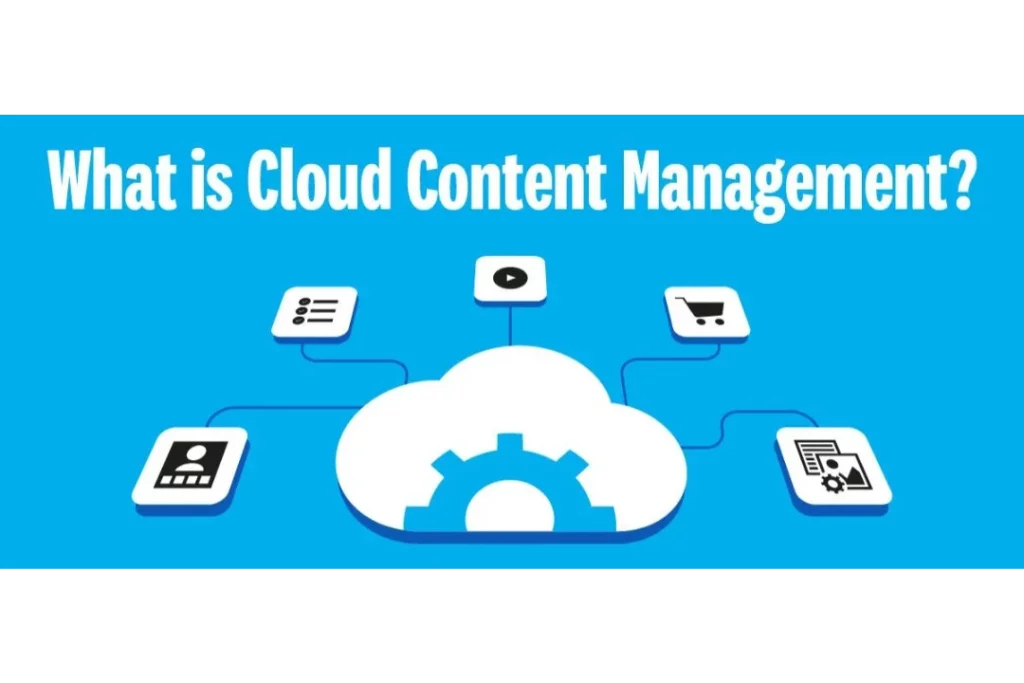
A Cloud CMS is a revolutionary system leveraging cloud computing infrastructure to manage, store, and deliver digital content. Unlike traditional CMS, it operates entirely in the cloud, allowing users to access and modify content from anywhere with internet connectivity. This system centralizes content storage, enabling seamless collaboration among teams distributed across various locations. Its functionality extends beyond basic content management; it encompasses version control, scalability, and robust security measures.
Benefits
The adoption of a Cloud CMS brings forth a myriad of advantages.
- Its cloud-based nature ensures unparalleled accessibility, enabling users to edit, update, and collaborate on content from any device and location.
- Its mobility facilitates real-time collaboration, enhancing productivity and efficiency among team members.
- The scalability offered by Cloud CMS allows for seamless expansion as businesses grow, eliminating concerns about server capacity or infrastructure limitations.
- Its automatic updates and maintenance alleviate the burden of managing server hardware, ensuring the system remains up-to-date with the latest features and security patches.
Drawbacks
However, Cloud CMS isn’t without its limitations.
- Dependence on internet connectivity poses a potential challenge; without a stable internet connection, accessing and modifying content becomes cumbersome.
- Concerns about data security and privacy persist, as storing sensitive information on a remote server raises questions about data breaches and compliance with regulatory standards.
- Moreover, subscription-based pricing models, while offering flexibility, might accumulate higher costs over time, especially with increased data storage and usage.
Famous Cloud CMS Platforms
Several renowned Cloud CMS platforms dominate the market, each offering distinct functionalities and features catering to diverse user needs.
- Contentful: Known for its flexibility and developer-friendly approach, Contentful offers a headless CMS that excels in managing content for websites, applications, and beyond. Its API-first architecture allows seamless integration with various devices and channels.
- Kentico Cloud: This platform provides an all-in-one content management solution designed for omnichannel content delivery. It offers a comprehensive suite of tools for content creation, collaboration, and delivery across multiple channels.
- Acquia: Acquia specializes in delivering cloud-based solutions built on Drupal, offering a scalable and secure Cloud CMS tailored for enterprise-level content management.
- Sitecore Content Hub: Recognized for its robust digital asset management capabilities, Sitecore Content Hub provides end-to-end content lifecycle management, empowering organizations to create, manage, and deliver content efficiently.
- Kentico Kontent: With a focus on content collaboration and multilingual capabilities, Kentico Kontent offers a headless CMS that simplifies content creation, management, and delivery across various digital platforms.
Component Content Management Systems (CCMS)
CCMS focuses on the modularization of content, breaking it down into reusable components. Unlike traditional CMS, which treats content as a whole, CCMS allows content creators to manage individual elements separately. These systems facilitate the creation and storage of content components, such as text blocks, images, videos, or metadata, which can be assembled and reused across various documents or platforms. This modular approach streamlines content creation, ensuring consistency, accuracy, and efficiency in content delivery.
Advantages of CCMS
One significant advantage of CCMS lies in its ability to foster content reuse.
- By modularizing content, it becomes reusable across multiple documents or channels, saving time and effort in content creation and updates.
- CCMS enhances content consistency by ensuring that the same components are used consistently across various materials, maintaining brand voice and integrity.
- These systems improve collaboration among content creators by enabling seamless sharing and reuse of content components.
Limitations of CCMS
While CCMS offers numerous advantages, it also presents certain limitations.
- Implementing a CCMS system requires careful planning and initial investment in setting up the infrastructure for modular content creation.
- The complexity involved in managing individual content components might demand a learning curve for users unfamiliar with this approach.
- Maintaining and updating content components across numerous documents or platforms can pose challenges, requiring robust governance and management processes.
Examples of CCMS Platforms
Several platforms exemplify the principles of CCMS:
- Vasont Systems: Known for its robust component content management capabilities, Vasont Systems enables users to create, manage, and reuse content components efficiently. It offers comprehensive tools for content assembly and distribution across multiple channels.
- IXIASOFT: Renowned for its XML component content management solutions, IXIASOFT provides a platform that empowers content creators to structure, manage, and publish modular content effectively. Its features support complex content management needs.
Enterprise Content Management Systems (ECM)
Enterprise Content Management Systems (ECM) are robust platforms designed to handle large-scale content management needs within organizations. ECM systems encompass a suite of tools and strategies that facilitate the creation, storage, organization, retrieval, and distribution of enterprise-level content. They aim to streamline workflows, improve collaboration, and ensure compliance with regulatory standards.
Key Features Of ECM
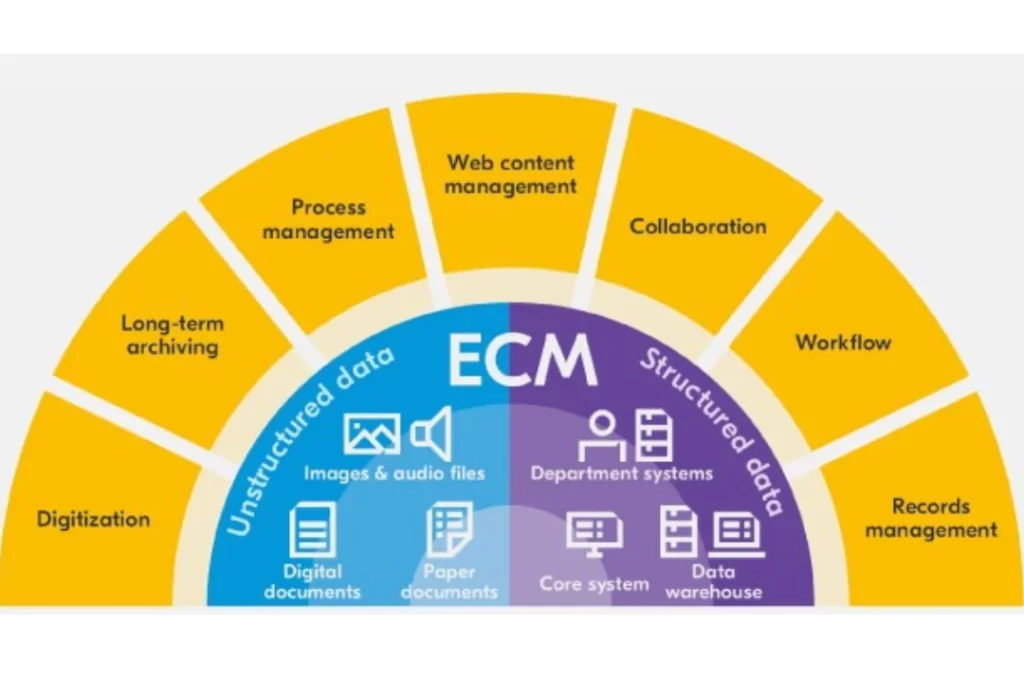
- Document Management: ECM systems excel in managing documents throughout their lifecycle, from creation to archiving, ensuring version control and accessibility.
- Workflow Automation: They offer automation tools that optimize processes, enhancing efficiency by automating repetitive tasks and routing content through predefined workflows.
- Records Management: ECM systems facilitate the categorization, retention, and disposal of records in adherence to compliance and regulatory requirements.
- Collaboration Tools: These systems enable seamless collaboration among teams, fostering communication and enhancing productivity.
- Security and Access Control: ECM platforms prioritize data security, employing robust access controls, encryption, and audit trails to safeguard sensitive information.
Pros and Cons of ECM Systems
Pros:
- Streamlined Operations: ECM systems streamline complex business processes, reducing manual intervention and improving operational efficiency.
- Enhanced Collaboration: They facilitate cross-team collaboration, allowing for better information sharing and teamwork.
- Compliance and Security: ECM systems aid in maintaining compliance with industry standards and regulatory requirements, ensuring data security and confidentiality.
- Scalability: These platforms are designed to accommodate the growing needs of large enterprises, scaling to manage vast amounts of content and users.
Cons:
- Implementation Challenges: Deploying ECM systems can be complex and time-consuming, requiring substantial investment in planning and resources.
- User Adoption: Resistance to change and lack of training may hinder user adoption, affecting the system’s effectiveness.
- Maintenance Costs: ECM systems often entail ongoing maintenance and support costs, including updates, licenses, and infrastructure upkeep.
- Customization Limitations: Some ECM solutions may have limitations in customization, potentially affecting their adaptability to specific organizational needs.
Famous ECM Platforms
- IBM FileNet: Known for its robust document management and workflow capabilities, FileNet offers scalable solutions for content governance and compliance.
- Microsoft SharePoint: Renowned for its collaboration features, SharePoint integrates well with other Microsoft products, offering extensive document management and collaboration tools.
- OpenText ECM: OpenText offers a suite of ECM solutions catering to various industry needs, emphasizing information governance, compliance, and workflow automation.
- M-Files: Recognized for its unique metadata-driven approach, M-Files simplifies content management and retrieval through intelligent information management.
Web Content Management Systems (WCMS)
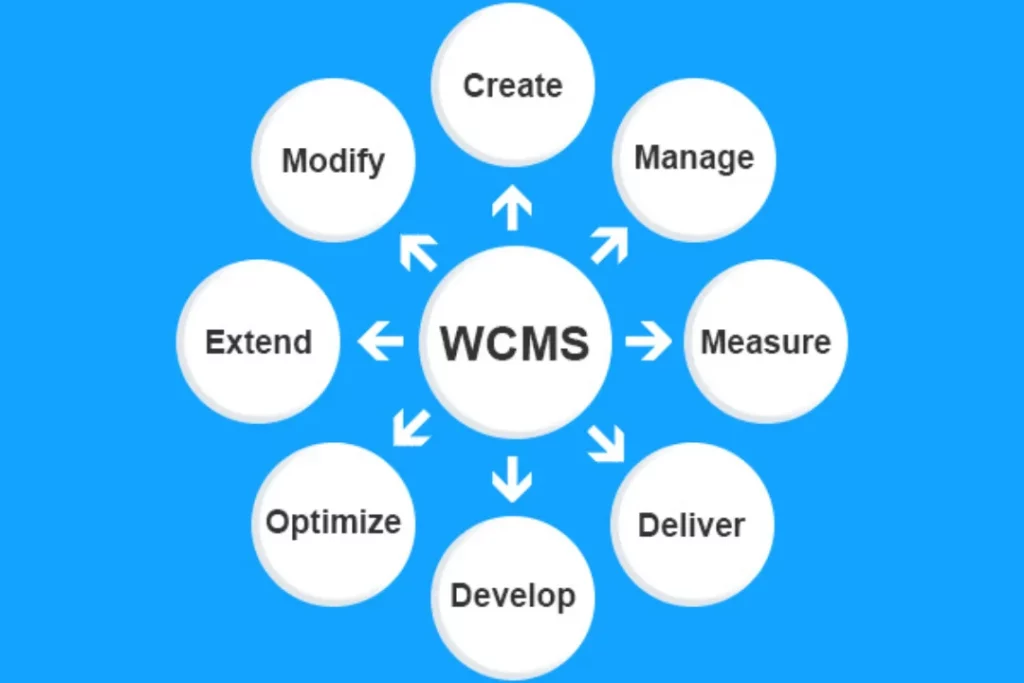
WCMS platforms serve as the backbone for creating, managing, and publishing web content. They provide intuitive interfaces allowing users, even without technical expertise, to design, edit, and update websites. Their functionality extends to content storage, version control, and seamless integration with various web elements like images, videos, and text.
These systems typically offer a range of features such as:
- Template-driven Design: Enabling easy website customization through pre-built templates.
- Content Authoring Tools: Facilitating content creation with user-friendly editing interfaces.
- Workflow Management: Supporting collaborative content creation and review processes.
- SEO Optimization: Providing tools to enhance search engine visibility.
- Multi-channel Publishing: Allowing content to be published across various platforms simultaneously.
Benefits and Pitfalls
Benefits:
- User-Friendly Interface: WCMS platforms prioritize ease of use, empowering individuals and businesses to manage their online presence without extensive technical knowledge.
- Efficiency and Time Savings: Content creation and updates can be swiftly executed, reducing the time required for website maintenance.
- Customization: Pre-built templates and themes offer customization options, enabling the creation of visually appealing websites tailored to specific needs.
- Content Consistency: Version control features ensure consistency across the website, avoiding conflicting or outdated information.
- SEO-Friendly Structure: Built-in tools assist in optimizing content for search engines, enhancing visibility and discoverability.
Pitfalls:
- Limitations in Customization: While WCMS platforms offer templates, customization options might be limited, leading to websites that look similar to others using the same themes.
- Dependency on Platform Updates: Regular updates are necessary to maintain security and functionality, potentially causing disruptions if not managed properly.
- Performance Concerns: Some WCMS platforms might suffer from performance issues, especially when handling large volumes of content or high traffic.
- Learning Curve for Advanced Features: Exploring and utilizing more advanced features might require a learning curve, especially for complex functionalities.
Common WCMS Platforms
- WordPress: Renowned for its user-friendly interface and extensive plugin ecosystem, catering to various website needs from blogging to e-commerce.
- Wix: Known for its drag-and-drop functionality, appealing to beginners seeking a visually attractive website.
- Drupal: Offers robust customization options and scalability, suitable for more complex website projects.
- Joomla: Balances user-friendliness with advanced features, making it suitable for mid-sized businesses or organizations.
- Squarespace: Emphasizes elegant design and simplicity, ideal for creatives and small businesses seeking a polished web presence.
Digital Asset Management Systems (DAM)
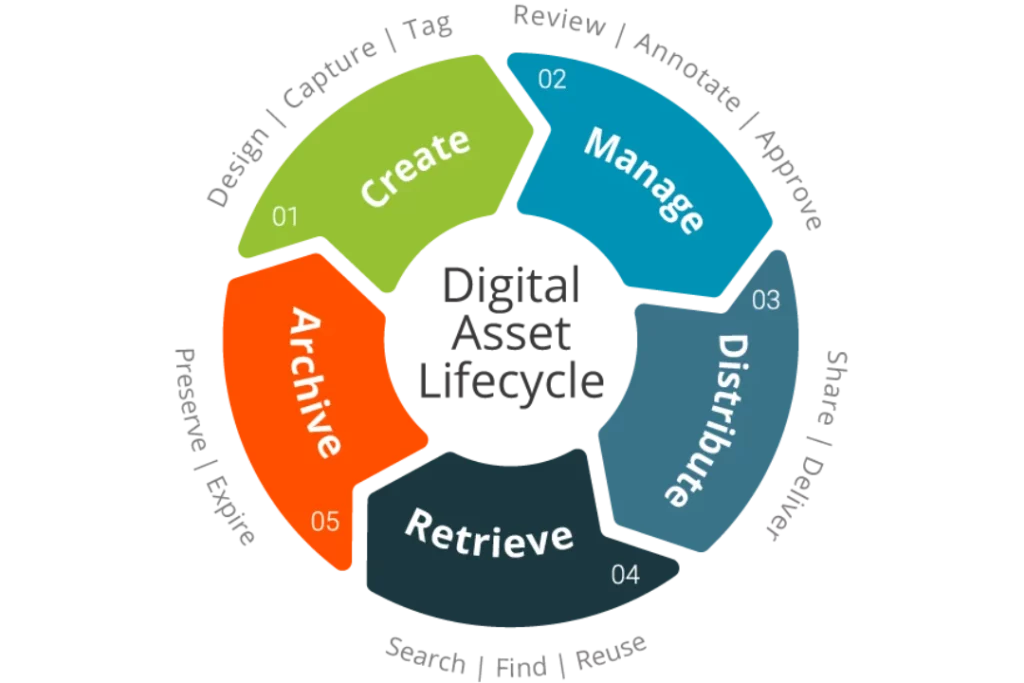
Digital Asset Management Systems (DAM) are robust platforms designed to efficiently organize, store, retrieve, and distribute digital assets. These assets encompass a wide range, including images, videos, documents, audio files, and more. DAM systems provide a centralized hub where businesses can manage their diverse array of digital content, ensuring easy accessibility and streamlined workflows.
Features of DAM systems often include:
- Centralized Repository: A single, organized database for all digital assets, simplifying storage and retrieval.
- Metadata Management: Tagging assets with metadata for easy search and categorization, enhancing discoverability.
- Version Control: Tracking and managing different versions of assets, ensuring the use of the most updated files.
- Collaboration Tools: Facilitating teamwork by enabling sharing, editing, and commenting on assets within the platform.
- Security Protocols: Implementing access controls and permissions to safeguard sensitive assets from unauthorized use or distribution.
Advantages and Disadvantages
Advantages:
- Efficient Organization: DAM systems streamline asset organization, reducing time spent searching for specific files.
- Enhanced Accessibility: Users can access assets from anywhere, promoting collaboration and remote work.
- Consistent Branding: Ensures brand consistency by centralizing approved assets and brand guidelines.
- Improved Workflow: Accelerates workflows by automating processes like file conversions or metadata tagging.
Disadvantages:
- Complex Implementation: Setting up a DAM system can be complex, requiring expertise and time.
- Costly Maintenance: Maintenance and updates might involve significant costs, especially for large-scale systems.
- User Adoption Challenges: Resistance or difficulty in transitioning to new systems among users can hinder adoption.
- Potential Over-Customization: Over-customization might lead to complexities that impede the system’s efficiency.
Known DAM Platforms
Several renowned DAM platforms cater to diverse business needs:
- Bynder: Known for its user-friendly interface and robust branding features, Bynder offers customizable solutions for businesses of various sizes.
- Adobe Experience Manager Assets: Integrating seamlessly with other Adobe products, it provides powerful editing and distribution capabilities.
- Widen Collective: Recognized for its scalability and strong analytics tools, Widen Collective suits businesses with extensive asset libraries.
- DAMCore: Offering AI-powered asset tagging and intelligent search functionalities, DAMCore focuses on cutting-edge technologies to streamline asset management.
- Brandfolder: Emphasizing intuitive user experiences and ease of use, Brandfolder is ideal for businesses looking for a straightforward yet powerful DAM solution.
Document Management Systems (DMS)
At its core, a Document Management System (DMS) is a sophisticated software solution designed to streamline the creation, storage, retrieval, and management of documents within an organization. Its primary aim is to organize and control the lifecycle of documents in a systematic and efficient manner.
Key features of a DMS include:
- Document Capture and Storage: Efficiently capturing, indexing, and storing various document types (such as text files, images, PDFs) in a centralized repository.
- Document Retrieval and Search: Facilitating quick and accurate retrieval of documents through robust search functionalities and indexing systems.
- Version Control and Tracking: Managing document versions, revisions, and changes, ensuring the integrity and authenticity of information.
- Access Control and Security: Implementing access restrictions, encryption, and user authentication protocols to safeguard sensitive documents.
At its core, a Document Management System (DMS) is a sophisticated software solution designed to streamline the creation, storage, retrieval, and management of documents within an organization. Its primary aim is to organize and control the lifecycle of documents in a systematic and efficient manner.
Key features of a DMS include:
- Document Capture and Storage: Efficiently capturing, indexing, and storing various document types (such as text files, images, PDFs) in a centralized repository.
- Document Retrieval and Search: Facilitating quick and accurate retrieval of documents through robust search functionalities and indexing systems.
- Version Control and Tracking: Managing document versions, revisions, and changes, ensuring the integrity and authenticity of information.
- Access Control and Security: Implementing access restrictions, encryption, and user authentication protocols to safeguard sensitive documents.
- Collaboration and Workflow Management: Enabling collaboration among users, allowing document sharing, commenting, and defining workflow processes for document approval and review.
Pros and Cons of DMS
Pros:
- Improved Efficiency: DMS streamlines document handling, reducing time spent searching for and managing documents, thus enhancing productivity.
- Enhanced Organization: Centralized storage and categorization of documents lead to better organization, minimizing the risk of data loss and duplication.
- Enhanced Security: Robust security measures protect sensitive documents, ensuring compliance with data protection regulations.
- Version Control: Tracking changes and managing document versions ensures accuracy and minimizes errors in collaborative environments.
Cons:
- Implementation Costs: Initial setup and implementation of DMS might involve significant costs, including software, hardware, and training expenses.
- Learning Curve: Users might require training to fully utilize the features, causing temporary disruptions in workflow during the adaptation phase.
- Dependency on Technology: Technical issues or system downtime could temporarily halt access to critical documents, affecting productivity.
- Potential Over-Complexity: Over-customization or complex configurations might hinder user adoption and require continuous maintenance.
Popular DMS Systems
Several Document Management Systems cater to various organizational needs:
- M-Files: Known for its user-friendly interface and metadata-driven architecture, enabling efficient document organization and retrieval.
- LogicalDOC: Offers a scalable solution with robust search functionalities, facilitating document management across various industries.
- DocuWare: Known for its workflow automation capabilities, allowing seamless integration with existing business processes.
- OpenText Documentum: Emphasizes enterprise-level document management, providing robust security features and compliance management.
- Alfresco: An open-source DMS, offering collaboration features and scalable solutions for diverse document management needs.
Conclusion:
Your choice of types of CMS should ultimately align with your business objectives and personnel abilities. Although sprung at the crossroads of technical-mechanic functions vs content-authoring objectives, there’s merit in considering stakeholder feedback and practical pros and cons. Knowing what you need is your first step towards recognizing your potential for greater content success. So, pick wisely, after all your CMS is the bedrock foundation upon which your digital footprint is built, maintained, remodeled, and expanded!
Frequently Asked questions
A Content Management System (CMS) is critical software or an application that is used to create and manage digital content. It can be used for both enterprise content management (ECM) and web content management (WCM).
Using a CMS is beneficial because it allows users with little to no coding knowledge to manage the creation, modification and deletion of content on a website. In addition, a good CMS offers flexibility, scalability, and easy content management.
No, each CMS has its own strengths and focus areas. Some are tailored for specific industries or purposes like e-commerce, while others excel in content-heavy sites. Assessing your specific needs is crucial for choosing the right one.
It depends on various factors like the complexity of your site, the CMS platforms involved, and the extent of customization. Simple sites might have smoother transitions, but larger or more customized sites could require more effort and resources.
Not necessarily. While open-source platforms are more accessible for potential vulnerabilities, their large communities often contribute to quick bug fixes and security updates. Proprietary systems may offer more controlled environments but aren’t immune to security risks.
A headless CMS separates content creation from its presentation layer, allowing content to be delivered across various devices and channels. Unlike traditional CMS, it doesn’t enforce a specific front-end structure, offering more flexibility.
Start by outlining your website’s requirements, including scalability, customization, ease of use, and specific features needed. Then, compare these against the strengths and weaknesses of various CMS types to find the best fit for your goals.
